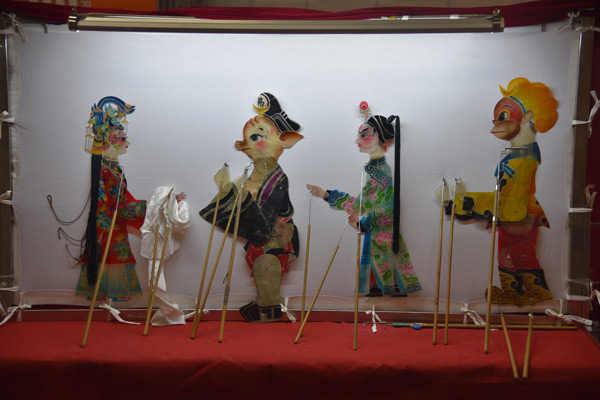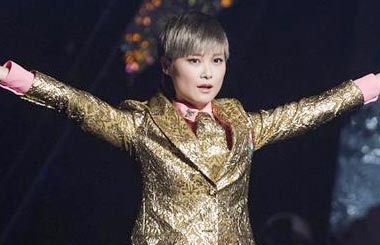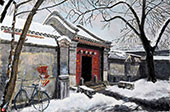Traditional folk art showcased at Beijing International Book Fair
By Zhang Xingjian ( chinadaily.com.cn ) Updated: 2016-08-26 15:18:57
 |
|
A shadow play titled Monkey Subdues White-Skeleton Demon is shown to the visitors. [Photo by Zhang Xingjian/chinadaily.com.cn] |
"Monkey King, monkey king, help me! I am tricked by the cunning female monster," Pig shouted for help.
This is a familiar scene Monkey Subdues White-Skeleton Demon from the Chinese classic novel Journey to the West. However, it is expressed neither in writing, nor in a TV series, but in shadow play.
Known as the "magic of the East" among Europeans, Chinese shadow play is a kind of drama in which silhouettes made of hard paper and hide are projected onto a white screen.
The performer manipulates the characters behind the screen while singing the libretto to tell the story. The story-telling is accompanied by music.
"The making of a shadow play character usually consists of four steps: designing, engraving, painting and assembling," said Li Hongming, a worker from Beijing Shadow Show Troupe."
"Facing the huge competition from modern audio-visual media such as television and movies, many shadow play groups have been disbanded, and many of the talented artists have died. However, as the national-level intangible cultural heritage, shadow play is now in a disadvantageous position. In the future, we will pay visits to many places including hotels, schools, squares and embassies to make people, the young in particular, realize the charm and essence of shadow play," Yi suggested.
Chinese shadow play, which came into being during the Han Dynasty (206BC-AD220) in Northwest China's Shaanxi province, spread to South Asia, Central Asia, West Asia and North Africa in the 13th century, and to Europe in the 17th century.
 |
|
An artist from Beijing Shadow Show Troupe plays the shadow play at the book fair. [Photo by Zhang Xingjian/chinadaily.com.cn] |
|
|
|
|
|
|
|
|























 Raymond Zhou:
Raymond Zhou: Pauline D Loh:
Pauline D Loh: Hot Pot
Hot Pot Eco China
Eco China China Dream
China Dream China Face
China Face





